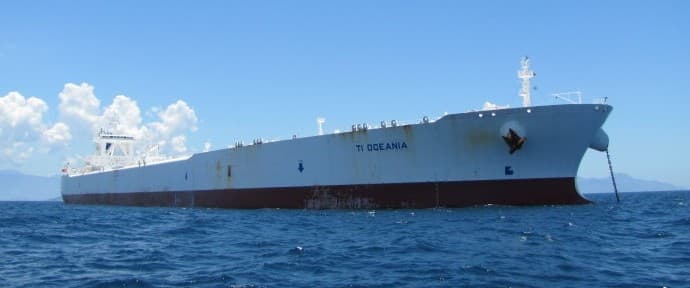Rising crude supply from OPEC+ and South America and a marked increase in longer-haul routes have hiked freight rates for supertankers, the so-called very large crude carriers (VLCCs) capable of transporting up to 2 million barrels of oil, to levels last seen nearly three years ago.
Tanker owners and shipbrokers expect the strength in the supertanker market to spill over to smaller-sized vessels such as Aframaxes and Suezmaxes and continue into the fourth quarter of the year.
In recent weeks, VLCC rates on the benchmark Middle East-to-China route hit the threshold of $100,000 per day. That was the highest in almost three years and well above the previous 2025 high during the Israel-Iran conflict in June, when fears of disruption to supply or trade flows sent charter rates soaring.
The last time VLCC rates were at the current high levels was in 2022, on the back of the Russian invasion of Ukraine and the massive crude oil releases from the U.S. Strategic Petroleum Reserves, U.S.-based brokers Poten & Partners said.
This time, the spike in freight rates is not the result of another geopolitical upheaval. It reflects fundamentals that are currently favorable for tanker owners and operators—rising supply from the Middle East and the Americas and stronger flows to Asia.
As OPEC+ continues to raise production, shipments out of the world’s key exporting region, the Middle East, are on the rise. Additionally, Saudi Arabia has slashed the prices of its crude loading for Asia next month, further incentivizing crude flows to the top oil-importing region.
Moreover, Middle Eastern producers are set to ship more crude after the end of the scorching summer, during which many countries in the region use direct crude burn for electricity.
Related: US Oil Drillers Add More Oil Rigs as Prices Climb
The global tanker fleet is now split between tankers and tanker owners complying with the sanctions on Iran and Russia and the price caps on Russian crude, and those that do not and enter the shadow fleet. This further squeezes supply for tankers to move crude around the world.
As a result of all these factors, the spot rate for a VLCC on the Middle East to China route has jumped to at least $6.6 million, the highest level since November 2022, with daily rates on several chartered tankers hitting $100,000.
Oil supply increases from the Americas and strong demand for long-distance shipments everywhere are supporting tanker rates, Lars Barstad, CEO at Norway’s tanker giant Frontline, told Bloomberg earlier this month.
“We’ve had a seasonally strong summer market, which again kind of confirms this positive demand growth as we see it,” Barstad said on the Q2 earnings call at the end of August.
“OPEC cut reversals are expected to yield increased exports from the Middle East as we approach winter,” the executive added.
Additional sanctions on the three major sanctioned producers – Russia, Iran, and Venezuela – could further benefit compliant tanker owners and operators, analysts say.
“As an ever larger portion of the tanker fleet is being sanctioned, mainstream tanker owners should benefit from increased ton-mile demand, not only for Aframaxes and Suezmaxes, but other segments too,” Poten & Partners said in a note carried by Seatrade Maritime News.
Yet, the soaring freight rates could become victims of their own success as high shipping costs have already started to narrow the U.S.-Asia arbitrage, potentially removing a major long-haul tanker route, at least for a few weeks.
The arbitrage window for U.S. crude sold in Asia is shrinking amid higher tanker rates and rising WTI premiums. The additional cost for carrying crude from the U.S. Gulf Coast to Asia has now reached $1.75 per barrel, a trade source told Reuters this week.
“That alone would close the arb,” the source said.
While the downside to VLCC rates appears firmly capped, “the sky is not without clouds,” brokers Fearnleys said in a weekly report this week.
“The surge in shipping costs and WTI premiums has all but shut the US-Asia oil arbitrage putting a damper on the Atlantic market.”
By Tsvetana Paraskova for Oilprice.com
More Top Reads From Oilprice.com
